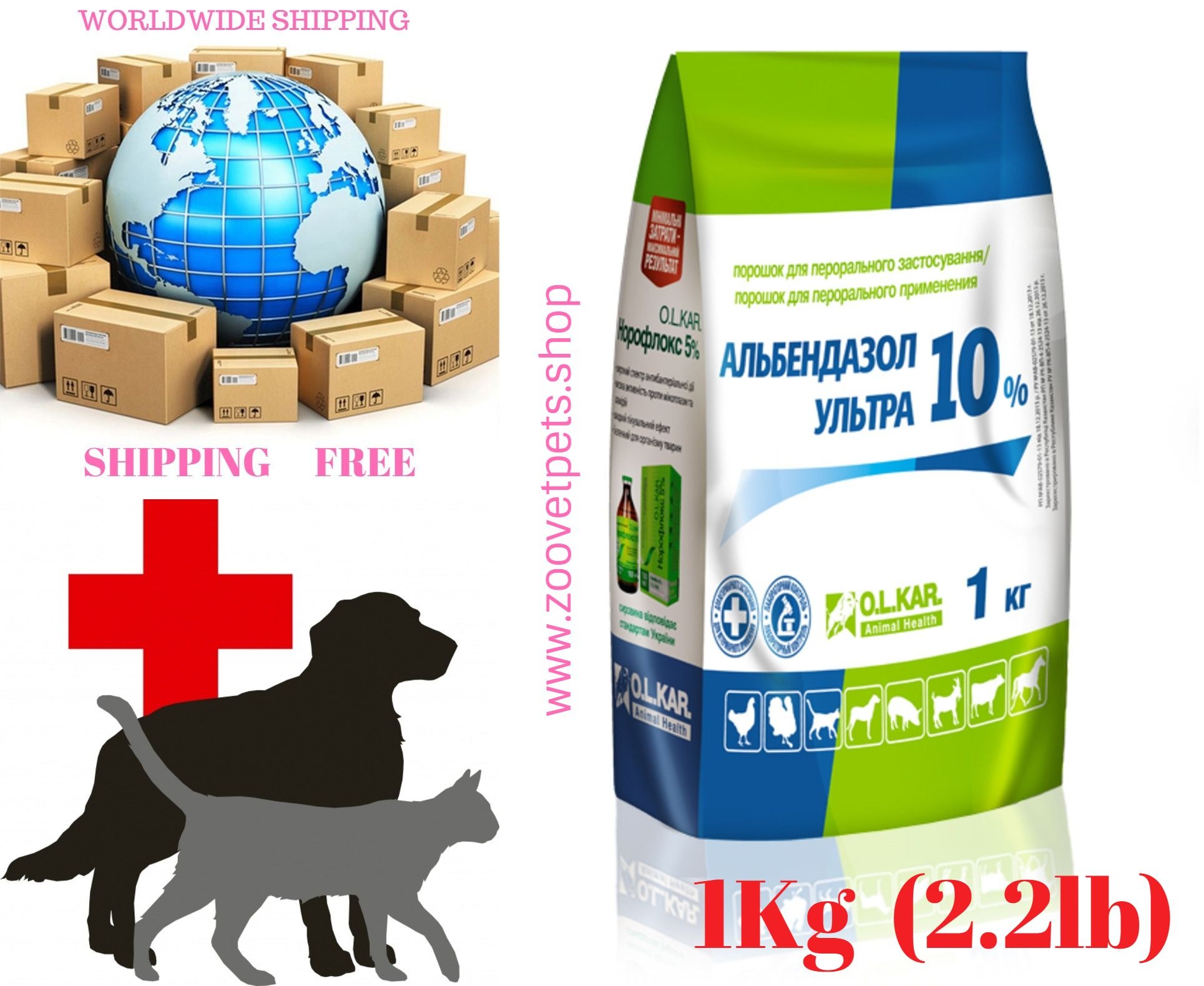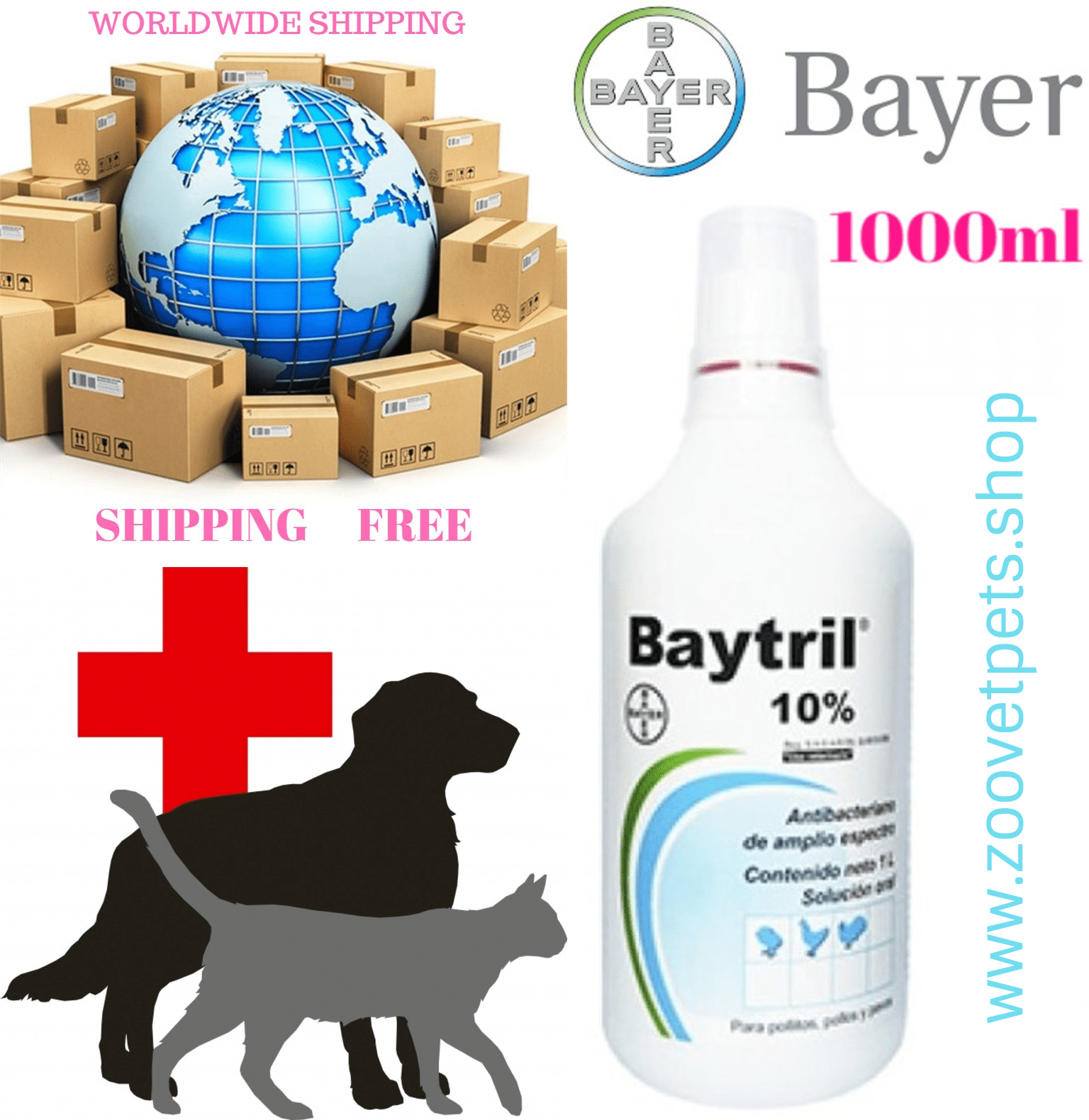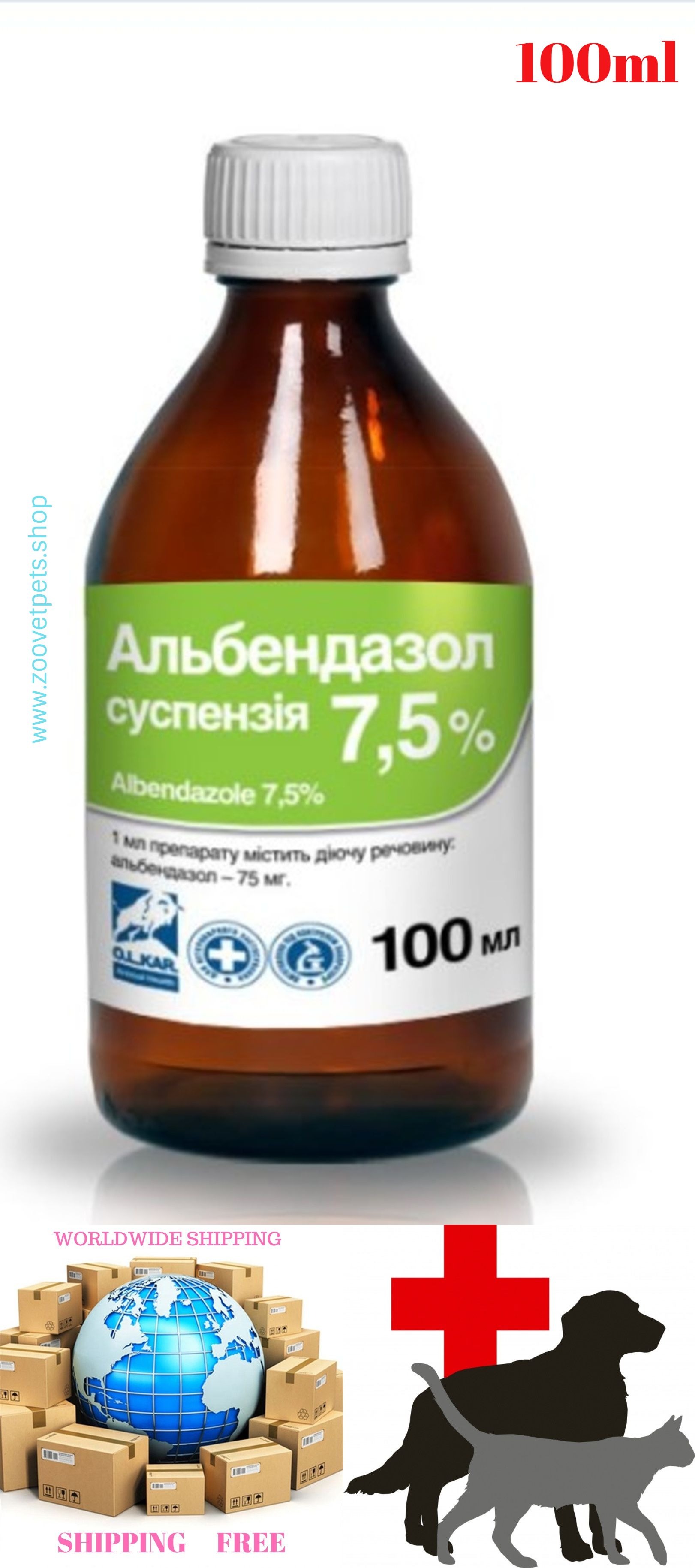Description
Homogeneous powder of white or gray color with a specific odor, insoluble in water.
Structure:
1 gram of the drug contains
the active substance:
Albendazole – 100 mg.
Pharmacological properties:
The active substance of the drug is albendazole (methyl [5- (propylsulfanyl) -1n-benzimidazol-2-yl] carbamate, a benzimidazole derivative). The mechanism of action of albendazole is that it inhibits protein (tubular) synthesis, as a result of which the intake and intracellular transport of nutrients and the exchange of substrate substances (ATP and glucose) are disrupted, and mitochondrial reactions are slowed down by the inhibition of fumarate reductase, which leads to a decrease in the amount of glycogen and death of parasites from exhaustion.
Application:
Deworming of cattle, horses, sheep, goats, pigs, carnivores and poultry with gastrointestinal and pulmonary nematodes, individual imaginal cestodoses and trematodoses.
Cattle, sheep, goats:
– pulmonary and gastrointestinal nematodes – gemonhoz ( of Haemonchus placei, of Haemonchus contortus), nematodiroz ( Nematodirus filicollis, Nematodirus spathiger),
haberthiosis ( Chabertia ovin a), bunostomosis ( Bunostomum trigonocephalum, Bunostomum phlebotomum), esophagostomiasis
( Oesophagostomum venulosum, Oesophagostomum columbianum, Oesophagostomum radiatum),
trichurosis ( Trichuris ovis, Trichuris skrjabini), strongyloidosis ( Strongyloides papillosus),
dictyocaulosis ( Dictyocaulus filaria, Dictyocaulus viviparus);
– cestodoses – moniesiosis ( Moniezia expansa , Moniezia benedeni ), tizanіziyoz ( Thysaniezia giardi );
– trematodoses – fascioliasis (Fasciola hepatica).
Horses:
– nematodoses – parascarosis ( Parascaris equorum), oxyurosis ( Oxyuris equi), dictyocauliasis
( Dictyocaulus arnfieldi), strongilata of the alimentary canal (family Strongylidae and Trichonematidae);
– cestodoses – anoplocephalidoses (families Anoplocephala and Paranoplocephala ).
Pigs:
– nematodes – askaroz ( Ascaris suum ), ezofagostomoz ( Oesophagostomum dentatum ),
trihuroz ( Trichuris suis ), strongyloidiasis ( Strongyloides ransomi ), metastrongylosis
( Metastrongylus elongatus , Metastrongylus pudendotectus , Metastrongylus salmi ).
Bird: nematodoses – ascariasis ( Ascaridia galli ), heterocycosis ( Heterakis gallinarum ), syngamosis
( Syngamus trachea ).
Carnivores (dogs, cats):
– nematodoses – toxocariasis ( Toxocara canis), toxoscarosis { Toxascaris leonina), uncinariosis
( Uncinaria stenocephala);
– cestodoses – dipylidiosis (Dipylidium caninum).
Dosage:
|
Disease name |
DR dose, mg / kg |
Dose of the drug in dosage form, gram / 22lb (10 kg) bw |
The frequency of deworming |
Note |
|
Cattle |
||||
| Moniesiosis |
7.5 |
0.75 |
twice with an interval of 24 hours | individually and in a group method with food |
| Fascioliasis |
twenty |
2 |
once | individually with feed |
| Hemonkhoz |
7.5 |
0.75 |
once |
individually with feed |
| Neoascarosis |
7.5 |
0.75 |
once |
individually with feed |
| Trichurosis |
7.5 |
0.75 |
once |
individually with feed |
| Trichostrongiasis |
7.5 |
0.75 |
once |
individually with feed |
| Ostertagia |
7.5 |
0.75 |
once |
individually with feed |
| Strongyloidosis |
7.5 |
0.75 |
once |
individually with feed |
| Nematodirosis |
7.5 |
0.75 | once |
individually with feed |
| Bunostomosis |
7.5 |
0.75 |
once |
individually with feed |
| Esophagostomiasis |
7.5 |
0.75 |
once |
individually with feed |
|
Small cattle (sheep, goats) |
||||
| Moniesiosis |
5 |
0.5 |
once | individually and in a group method with food |
| Dicroceliosis |
fifteen |
1,5 |
once |
individually and in a group method with food |
| Dictiocaulosis |
5 |
0.5 |
once |
individually and in a group method with food |
| Protostrongillosis |
5 |
0.5 |
once |
individually and in a group method with food |
| Fascioliasis |
10 |
1,0 |
once | individually and in a group method with food |
| Hemonkhoz | 5 | 0.5 | once |
individually and in a group method with food |
| Ostertagia |
5 |
0.5 |
once |
individually and in a group method with food |
| Nematodirosis |
5 |
0.5 |
once |
individually and in a group method with food |
| Esophagostomiasis |
5 |
0.5 |
once |
individually and in a group method with food |
| Habertiosis |
5 |
0.5 |
once |
individually and in a group method with food |
|
Pigs |
||||
| Askarose
|
10
|
one
|
once | individually and in a group method with food |
| Mixed invasion |
10 |
one |
twice with an interval of 24 hours |
individually and in a group method with food |
| Esophagostomiasis |
10 |
one |
once | individually and in a group method with food |
| Trichurosis |
10 |
one |
twice with an interval of 24 hours |
individually and in a group method with food |
| Metastrongillosis |
10 |
one |
once | individually and in a group method with food |
| Strongyloidosis |
10 |
one |
once |
individually and in a group method with food |
|
Horses |
||||
| Parascarosis |
10 |
one |
once | individually with feed |
| Oxyurosis |
10 |
one |
once |
individually with feed |
| Delafondiosis |
10 |
one |
once |
individually with feed |
| Alfortiosis |
10 |
one |
once |
individually with feed |
| Strongylidosis |
10 |
one |
once |
individually with feed |
| Cyatostomiasis |
10 |
one |
once |
individually with feed |
| Anoplocephalidosis |
10 |
one |
twice with an interval of 24 hours |
individually with feed |
|
Carnivores |
||||
| Toxocariasis |
thirty |
3 |
once | individually with feed |
| Uncinariosis |
thirty |
3 |
once |
individually with feed |
| Dipylidiosis |
thirty |
3 |
once |
individually with feed |
|
Bird |
||||
| Syngamosis |
5 |
0.5 |
5 consecutive days | group method with food |








Reviews
There are no reviews yet.